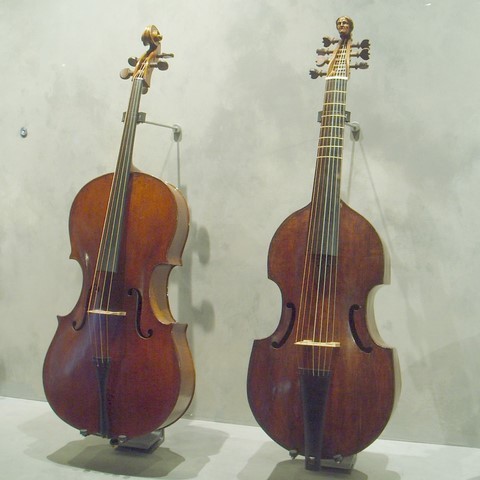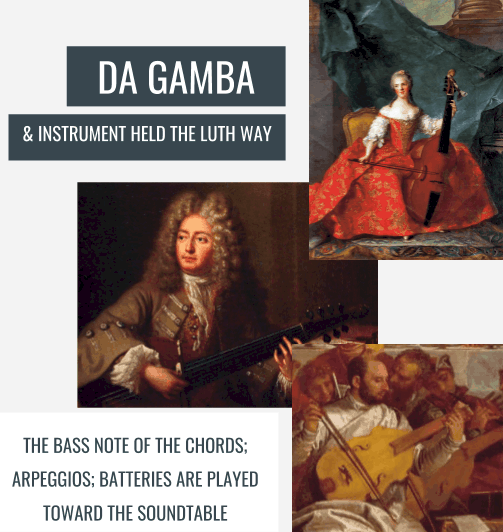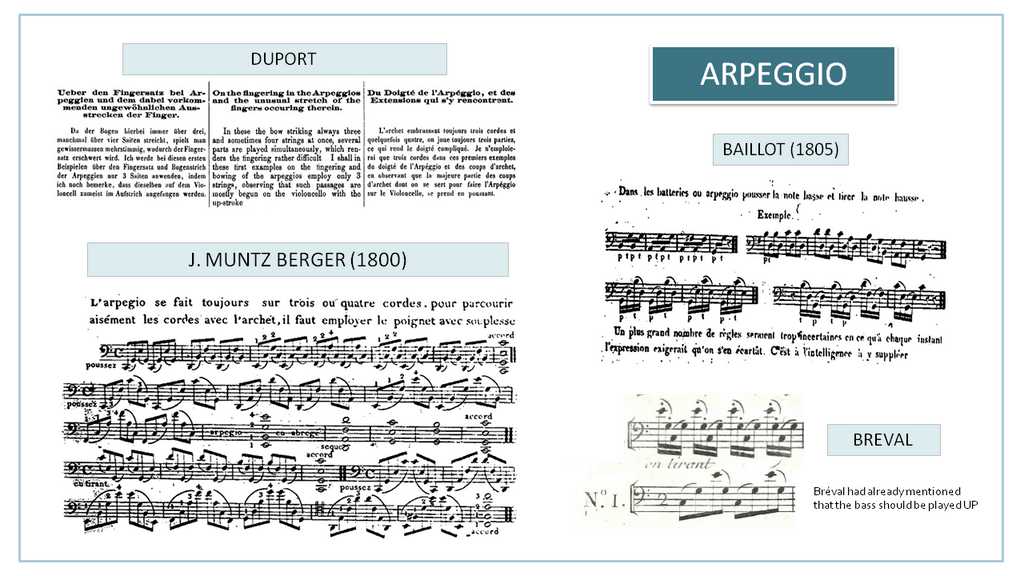Bowings and the Bach Cello Suites...
up or down?the origins of the down-stroke

and playing the bass on the Up-bow
A RESEARCH PROJECT BY MARIANNE DUMAS
This material may not be published, rewritten or redistributed without authorization of the author.
The history of the cello is a subject that has been researched, studied, and written for centuries in great detail. However, because the first methods of cello playing appeared after 1740, the technique of the baroque cello can still be questioned. This publication presents a vision of the instrument closer to the viola da gamba than to the violin. It covers arguments for and against this theory as well as the paper’s position on this topic. Research for this project was accomplished through the use of scholarly books, treaties, publications, encyclopedias related to the history of the cello. In order to illustrate vision of the instrument, this article comes with a new edition of the Bach Cello Suites and a recording of it with the instruments used for this project.
.
HISTORICAL RESEARCH
I. THE VIOLONCELLO
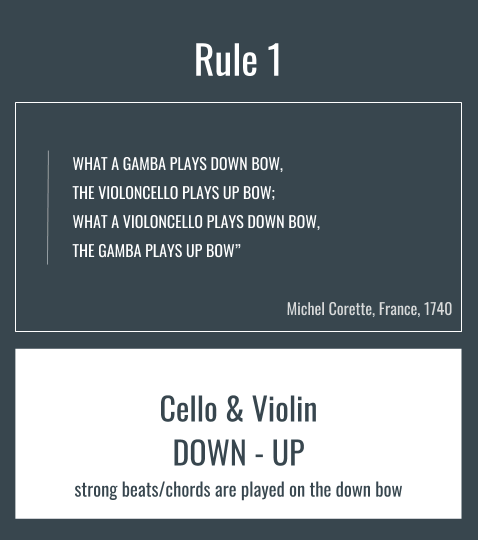
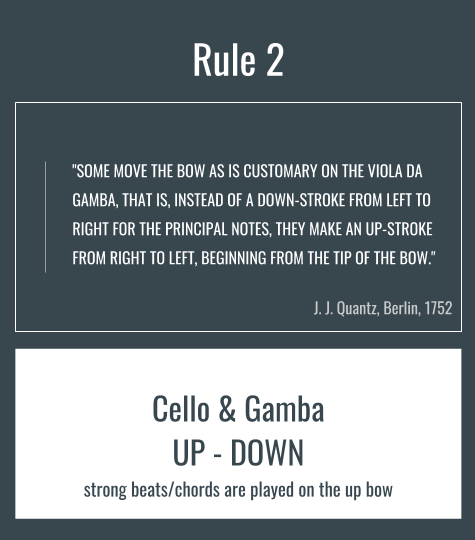
GIVE A STROKE DowNWard THE SOUNDBOARD
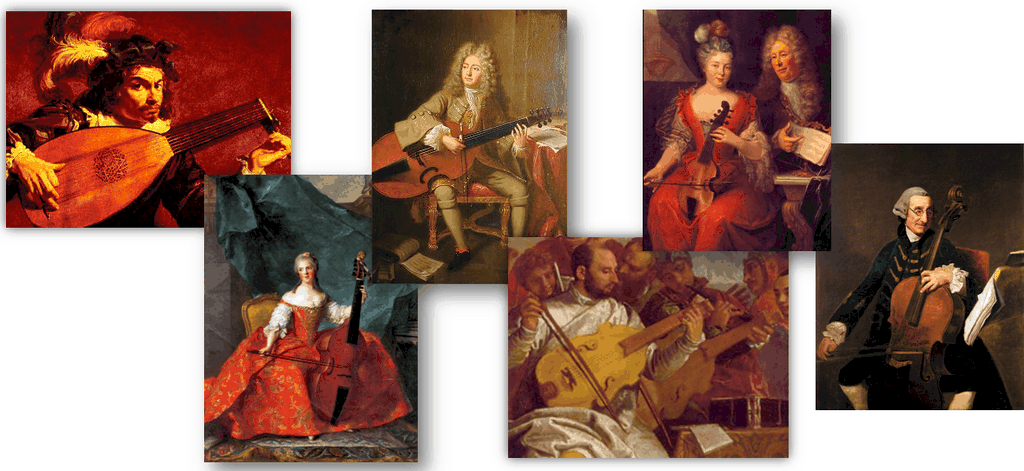
The movement of the arm follows the order of the strings, toward the instrument, using the natural weight of the arm, without adding pressure on the string for the bowed instuments. No matter which string instrument.
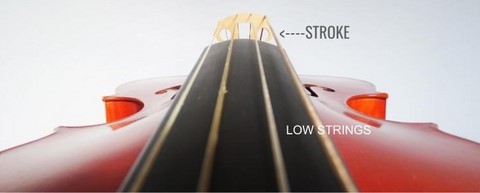
II. THE ORDER OF THE STRINGS
AND HOW OTHER INSTRUMENTS PLAY CHORDS, ARPEGGIOS, STRONG BEATS...
LUTE & PLUCKED STRINGS INSTRUMENT HELD LIKE A VIOLIN & DA SPALLA VIOLA DA GAMBA & BOWED INSTRUMENTS HELD THE LUTE WAY
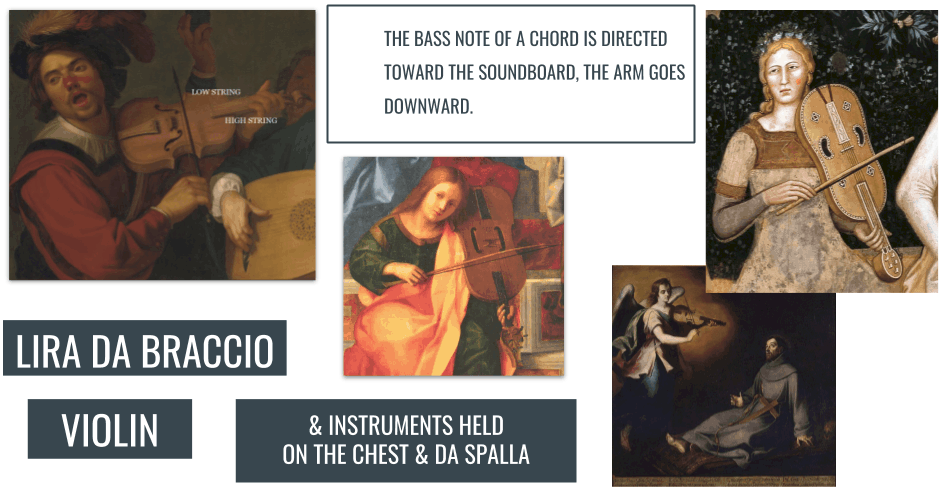
.
QUANTZ
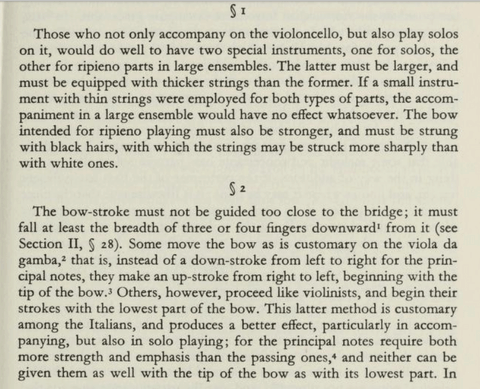

"The cello is similar to a violin because of its 4 strings and the tuning in fifths but but it is held the contrary way of the violin. This results on the opposition of the order of the strings. For that reason, the bowing technique should be opposite as well."
..

.


" There are two ways to hold bowed string instruments. One is like the basse viol, it is also how we hold the bass violins, contrabasses, and other big instruments.
The other way is to hold the instrument the same way we hold the violin and all the instruments no longer than the arm.
There is a general rule, one plays down bow what we play we play up bow on the others. Therefore, on a bass viol and a bass violin, we play up bow on the long ones , and the opposite on the violins and other instruments held the violin way.
The reason of this difference is that the strength for the basses is on the up bow and that on the violin it is on the down bow, because of the way the instruments are held."
.
BY CONSEQUENCE...
.

.

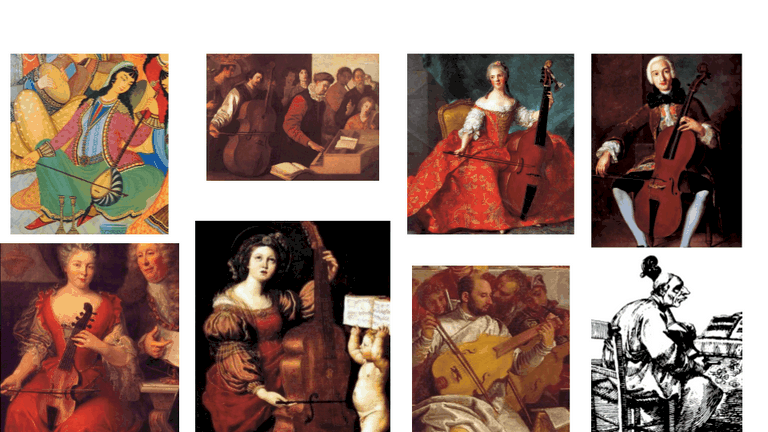

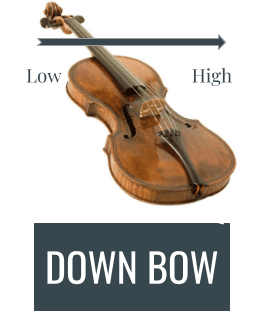

THEN WHICH BOW HOLD SHOULD I USE?
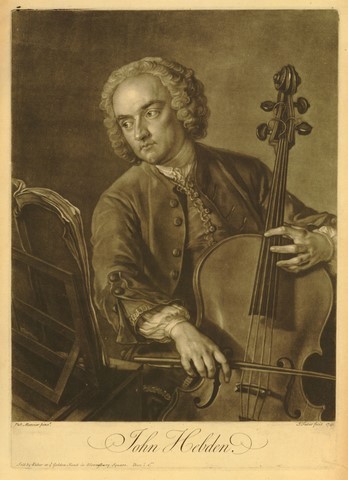
Both bowholds were used, underhand and overhand bow-holds. BUT... it is not because you choose to play with the hand over that you should copy the bowings of the Da Spalla family.
When playing your hand at the balance point of the bow, you will notice that it becomes very easy to play the basses on the "up" bow. Thatwas the technique o the 18th century. You can even find it on the first cello methods until mid 19th century.
What matters is the way you conduct the string. Toward the soundboard, and toward the next string you are playing.
Read: Bow-holds, cellists who played with underhand bow hold
..
THE VIOLONCELLOinstrument between the BASS VIOL AND THE VIOLIN
CELLO & VIOLIN
- Members of the same family
- Shape
- Tuning is in fifths.
CELLO & VIOLA DA GAMBA
- size, register, posture
- Instruments of the contino.
- About the shape: there were (and still are) viola da gamba with violin shapes.
THE BASS VIOLIN / VIOLONCELLO IN THE BAROQUE ERA.
The baroque period marks the development of virtuosity, and it is also the period of the basso continuo.
17th Century: A bass / a violone
During the first half of the baroque period, the violoncello was referred as a bass ("la basse" in French), it was part of the basso continuo group, used for accompaniement only while the violin became an instrument of virtuosity.From the end of the 17th : A small bass or violone : a violoncello
THE FIRST CELLO METHODS - AFTER 1750
SUMMARY & CONCLUSIONS
This material may not be published, broadcast, rewritten or redistributed without mention of the author, Marianne Dumas.

1. The underhand bow grip was not reserved to the viols. It was of common use among the cellists until the 19th c.
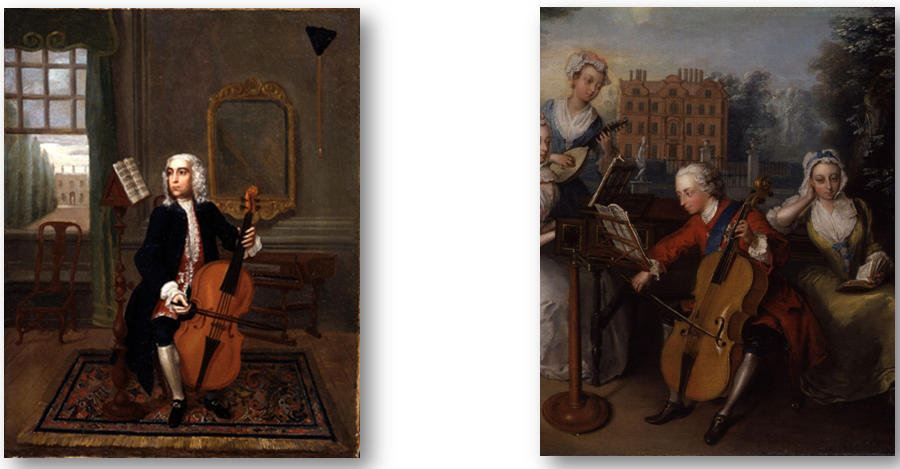
2. Until the middle of the 18th c. , cello methods mention the bowing for the Arpeggios and Batteries : the bass had to be played on the up bow.
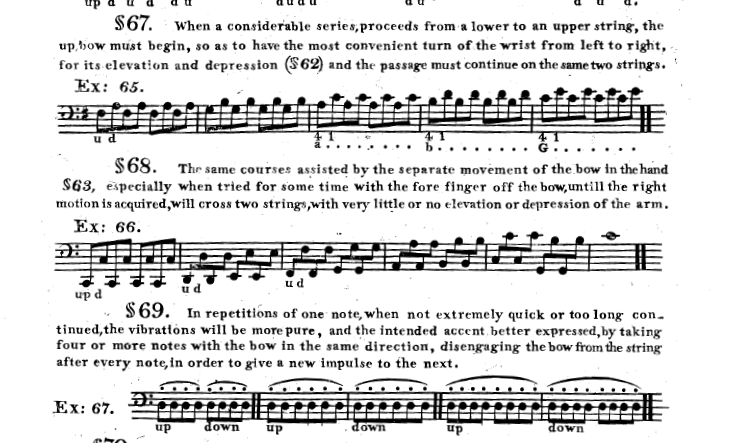
3. No matter which instrument, when playing the bass note, the arm was going toward the sound board and the other strings, using the natural weight of the arm.
4. J. Quantz, in 1752, explains that in Germany cellists played with a bow strokes similar to the one on the viola da gamba.

Marianne Dumas
This project was run between September 2014 and May 2018, in Berlin
Acknolegements
To Daniel König and his beautiful cello, his inspiration, guidance and countless hours we spent looking for the set-up. To Hans Reiners for making the bow, and for guiding me when I started my project. To the librabry of the Staatliches Institut für Musikforschung Berlin for creating a space where one can have access to countless documents guided by a very helpful staff.
.
